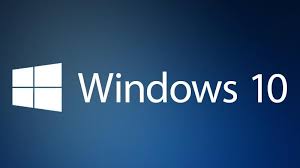posted on Dec 01, 2016 by John Laherty

NelsonHall recently attended a session in London with HPE Enterprise Services (HPE ES) and Microsoft for an update on their Cloud Productivity & Mobility (CPM) partnership based on Windows 10.
HPE ES shared its vision of the end-to-end ‘Modern Enterprise’, using Windows 10 to enable it to manage and offer a consistent user experience across the entire organization. HPE ES sees one of the main drivers for adoption of Windows 10 as the ‘end of life’ support for Windows 7, which ceases at the end of December, 2019. As a result, many enterprises will be embarking on a migration over the next three years.
HPE ES currently manages ~7m desktops globally, with the vast majority on Windows 7 operating systems, and it intends to migrate all these clients to Windows 10 by end 2019 or early 2020.
A long-standing partnership
HPE ES and Microsoft have a partnership that goes back over 30 years, particularly in relation to workplace services. In November 2015, they announced an expansion of the partnership with the availability of Cloud Productivity and Mobility (CPM) offerings based on Windows 10.
HPE ES is offering:
- Consulting services (digital process design and transformation, application development and prototyping): in essence, mapping HPE ES’ services onto Microsoft software products (including Office 365, Windows 10 for Enterprise, Dynamics CRM, Skype for Business, and Enterprise Mobility Suite with Security), and also offering managed services
- Cloud and mobility consulting for the Windows 10 ecosystem, including ‘Reimagine 10’, five-day joint workshops with Microsoft that combine business issues with technology analysis, and user experience and workflow to help accelerate transformation. The workshops culminate with a Statement of Work (SOW), including high-level architecture, pricing and a timeline from prototype to live in a few weeks.
- Industry-specific Windows 10-based applications (see below).
HPE ES has strong desktop credentials
HPE ES’ Workplace and Mobility capabilities include:
- Managing ~7.0m desktops across 135 countries
- ~2.5m managed devices
- Providing service desk support in 43 languages; >44m service desk contacts per year
- 48k Microsoft trained professionals (joint)
- 500+ Microsoft Dynamics professionals.
Deploying joint industry-specific Windows 10-based applications
HPE ES and Microsoft are jointly deploying healthcare, automotive, transportation and financial sector-specific applications in client organizations, Examples include:
- Healthcare: telemedicine solutions (leveraging Skype for Business for remote patient monitoring and diagnosis); also piloting wearables solutions for diabetes monitoring
- Automotive: an offering built on Microsoft Dynamics for the after-sales market (HPE Automotive CX Management Solution).
Other solutions also being jointly developed include industry-specific solutions in the retail, energy and manufacturing sectors.
Three-phase approach to Windows 10 desktop migration
HPE ES is looking to leverage its cross-industry and geography capabilities to enable clients to become an end-to-end Modern Enterprise, with the ability to manage and offer a consistent user experience across their organization. This is envisioned as a three-phase process:
- Advise: understanding the client approach: big-bang, phased approach (pc by pc), mobility requirements (BYOD); application criticality (and actions to take when a new version is available)
- Transform: moving to the cloud; application virtualization, joint HPE ES/Microsoft DC
- Manage: managed services including level 1 service desk, level 2 & 3 support, and level 4 support (Microsoft); transformational projects (e.g. Exchange, Sharepoint).
HPE ES will target desktop deals above 500 seats, whether as a standalone contract or as part of a multi-scope IT infrastructure contract. HPE ES will then seek to provide project transformation around the desktop managed services, with most of its enterprise customers currently looking at Office 360 for Exchange as the starting point. HPE ES’ view is that not all these will be 100% in the cloud, but mostly hybrid.
Within these projects, HPE ES will hold advisory workshops first, building a business case and calling out what it calls ‘watch-points’, which are essentially technical issues that could affect the transformation project (e.g. security, network bandwidth, archiving, legal). An assessment is then carried out, and clients are provided with access to Microsoft FastTrack, providing resources and tools to help with Office 365 rollout.
After Exchange, HPE ES is now starting to see more enterprises looking at Sharepoint in the cloud.
Outlook
Looking ahead:
- Microsoft have aspirations over the next three years for HPE ES to become its top #2 or #3 partner globally in supporting the Enterprise (by number of seats) in the cloud
- HPE ES’ intention to transition most of its ~7m client desktops to Windows 10 by 2020 at the latest will be a huge undertaking, even more so because many of the migrations will be hybrid in nature
- HPE ES claims to have won a number of deals in last 12 months across industries for Microsoft Office 365 (~35 contracts), and Windows 10 (~15 contracts) and expects this to continue
- HPE ES and Microsoft claim there is strong demand for their joint industry-specific Windows 10-based apps, in particular for MS Dynamics across industries (with many still in pilot mode)
- HPE ES will also merge with CSC by the end of March 2017, and will benefit from the recent CSC acquisition of UXC in Australia, and investment in eBECS, a U.K.-based Microsoft Gold Partner, both bringing significant capability in Microsoft Dynamics and ~900 employees.
The HPE ES partnership with Microsoft on Cloud & Productivity Mobility will allow the company to take real advantage of opportunities with enterprises on Windows 7 migrating to Windows 10. However, the timeline to transition many of its ~7m desktop base to Windows 10 in three years appears optimistic.
Although end of life support for Windows 7 will cease in December 2019, we are unlikely to see a stampede to move to Windows 10 – as was the case when Windows XP extended support ended in April 2014 (indeed, HPE ES still has a number of desktop clients on XP today). It would have been good to see more on IP and accelerators from HPE ES, to show how and why they are differentiated in the market with this offering (although HPE ES is looking at a number of predictive analytics and shift-left capabilities through a persona-based approach within the service desk).
HPE ES will soon merge with CSC, and this next stage of the company’s evolution should present many opportunities to leverage this offering further.


